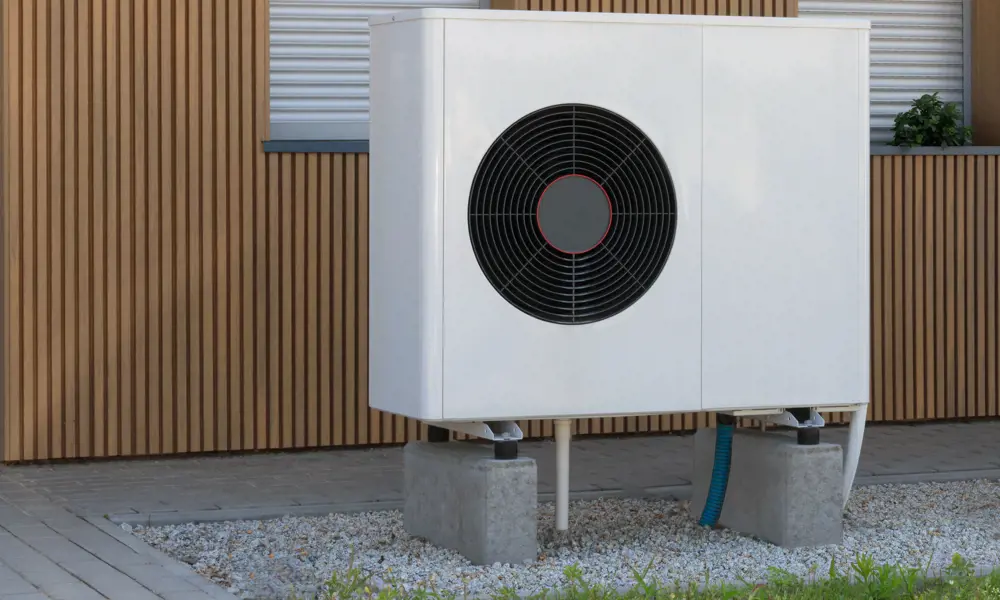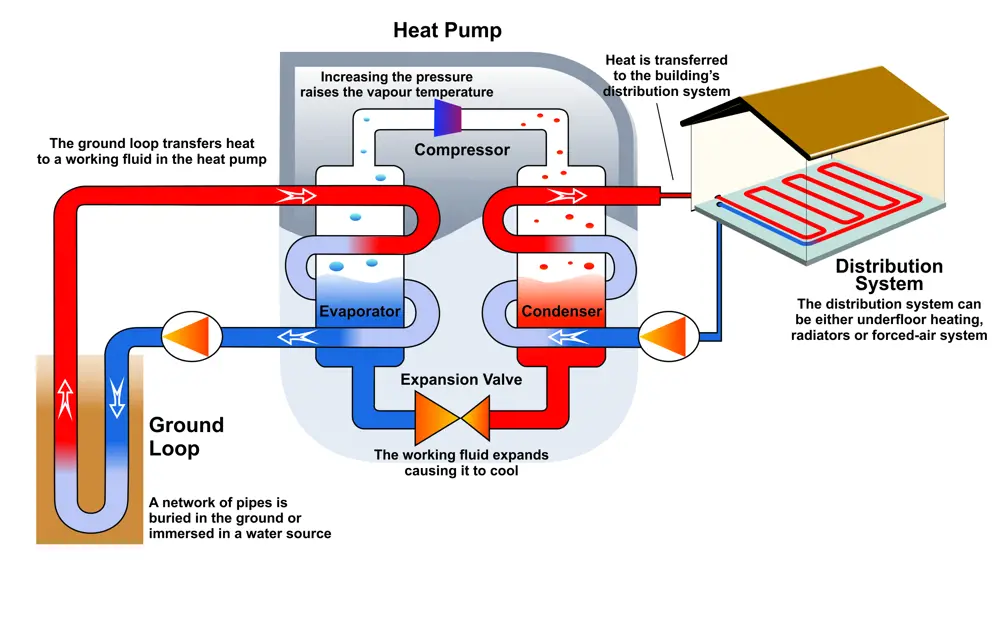
Ground source heat pumps
Ground source heat pumps (GSHPs) have been used for many years in North America, Sweden and Germany. Now they are being increasingly deployed in homes and commercial buildings in the UK, with the government providing financial incentives to owners who install them.
GSHPs are made up of three elements: a ground-heat exchange loop, a heat pump and a distribution system above ground. High-density polyethylene pipes are laid out underground, usually in coils to maximise the length available; for every 10 metres of pipe, one kilowatt of energy can be absorbed from the ground. The pipe is usually laid in horizontal trenches next to the building. If there is not sufficient room in the garden, a borehole can be drilled down to a depth of 15 metres to 150 metres. Another option is to lay the pipes in a pond or lake.
A mixture of water and antifreeze is then pumped around the loop absorbing the trapped underground heat (around 10°C). The water mixture is then compressed and passes through a heat exchanger, which extracts the heat and transfers it to the heat pump.

Ground source heat pump schematic © Geothermal Heat Pump Association of New Zealand
The heat pump consists of an evaporator, compressor condenser and expansion valve, and uses the principles of the Carnot cycle to increase pressure and raise vapour temperature (up to 50°C). The evaporator converts the working liquid to a vapour; the compressor significantly raises its temperature and pressure; the condenser transfers the heat to the building’s distribution system; and then the expansion valve cools things down so that it becomes, once more, a cold mix of liquid and vapour.
The maximum efficiencies derived from this system are through underfloor heating or large, low temperature radiators. If the heat pump needs to reach a higher temperature, the efficiency is reduced.
GSHPs generate less carbon dioxide than conventional heating systems although they still require electricity to drive the compressor unit and the circulation pumps. If this electricity is derived from renewables it becomes zero-carbon to run. For every unit of electricity used to work the pump, between three to four units of heat are made.
GSHPs can also be used on large-scale projects. The UK’s largest GSHP system was recently completed in Enfield, London. A total of 400 flats across eight tower blocks were linked up to eight boreholes. Each flat has its own heat pump and it is expected that the residents will see their energy bills reduced by 30% to 50%. The initiative won the 2019 District Heating Project of the Year.
There is also a market for air source heat pumps in the UK. These operate in a similar way to GSHPs but use air to transfer heat from outside a property to the inside. The upfront costs are lower as they don’t require any digging, just a unit set up alongside. However, air source heat pumps are less efficient than GSHPs because they are subject to fluctuating air temperatures and must work harder (use more electricity) to produce heat when the outside air temperature is lower.
***
This article has been adapted from "How does that work? Ground source heat pumps", which originally appeared in the print edition of Ingenia 82 (March 2020).
Keep up-to-date with Ingenia for free
SubscribeRelated content
Energy

Algae-powered architecture
An apartment block in Hamburg in Germany has been built that uses microalgae placed within its façade to generate heat and biomass. Jan Wurm, an associate director at Arup, was one of the chief designers of the energy system. He talked about the concept, execution and results from the world’s first photobioreactor.

Digital hydraulics for wind energy and beyond
Research that has helped change the technology for harnessing wind energy has many other applications. The digital hydraulics system devised by Artemis Intelligent Power has received many accolades, the latest being the winner of the 2015 MacRobert Award.

New energy pioneers
London-based BBOXX supplies solar-powered battery boxes to customers in developing countries. Their remote monitoring and battery management system was one of the winners of the 2015 Bloomberg New Energy Finance Award.

Energy with connections
When Steve Holliday FREng moved from the oil industry into energy distribution, the sector was seen as staid. In reality, during his years at National Grid, the sector became increasingly important as the need to tackle climate change led to a transformation in the UK’s energy mix.
Other content from Ingenia
Quick read

- Environment & sustainability
- Opinion
A young engineer’s perspective on the good, the bad and the ugly of COP27

- Environment & sustainability
- Issue 95
How do we pay for net zero technologies?
Quick read

- Transport
- Mechanical
- How I got here
Electrifying trains and STEMAZING outreach

- Civil & structural
- Environment & sustainability
- Issue 95